System Preferences in OS X 10.9, Mavericks: Mouse

AMITIAE - Monday 4 November 2013
|
System Preferences in OS X 10.9, Mavericks: Mouse |
 |
|
|
By Graham K. Rogers
As before, a caption indicates that the system is searching for a Bluetooth mouse, or asks for a USB mouse to be attached. Added text advice in the panel suggests that if the Bluetooth mouse does not appear, a user should check that it has batteries and is turned on. When the panel is open with no mouse connected, a gear-wheel spins near the bottom. Alongside is the word, "Searching. . . ." When any mouse is connected to the computer, the panel changes. The new image and information display will depend on the type of mouse connected.
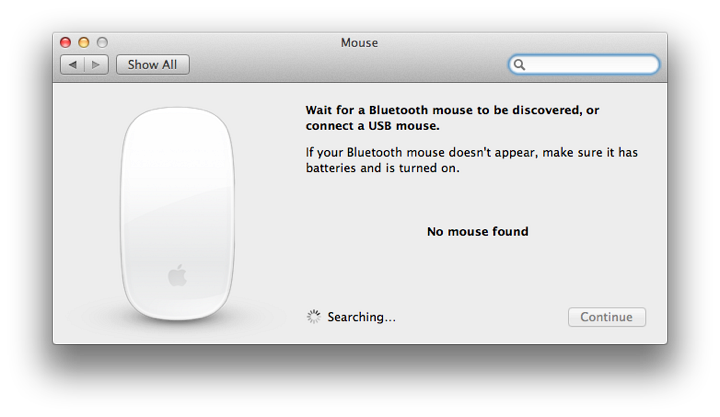
Single Button MouseThe original Apple mouse had a single button. Although these are less common now, some survive and the Mouse Preferences panel has a panel for this type. I still have one from the eMac I owned (2004). When attached to the Mac, the mouse panel changes almost immediately (3 seconds). There is no mouse image. Two controls are available: sliders for Tracking Speed and Double-Click Speed. Below is a button for setting up a Bluetooth Mouse. This appears in every Mouse Preferences panel.
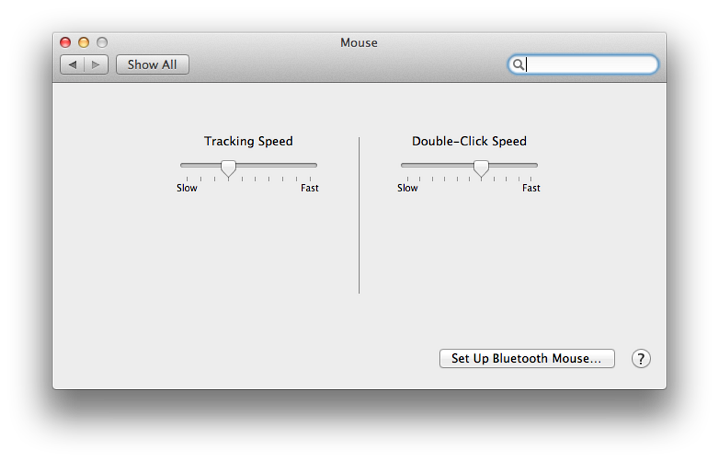
Two-Button Generic MouseWhen I attached a Logitech, 2-button Optical Mouse (with a scroll-wheel) to the Mac, the panel changed from the "no mouse" display to the settings for a two-button mouse. I have tried this in the past with other types of mouse that my students were using and all worked without problem.In Mountain Lion I had tested with a similar Microsoft mouse and saw at the top then a checkbox to change scrolling direction. That checkbox did not appear when using the mouse in Mavericks.
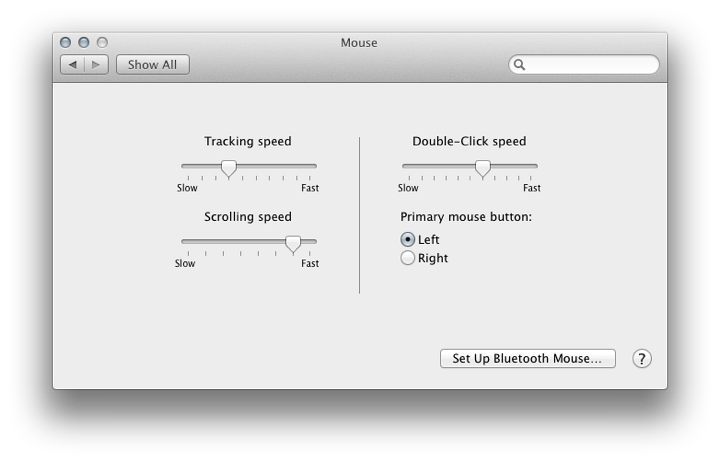
Below the Double-click speed slider are two radio buttons for selection of the primary mouse button. Some prefer this to be the Left click, while others prefer the Right click. In any case additional features are available (as with the single-button mouse) by pressing the Control key just before the mouse click. The ability to zoom using the scroll wheel (and a specified key - e.g. Control) as an option is no longer available using this panel. As with a similar trackpad control, this is turned on in Accessibility preferences (Seeing - Zoom).
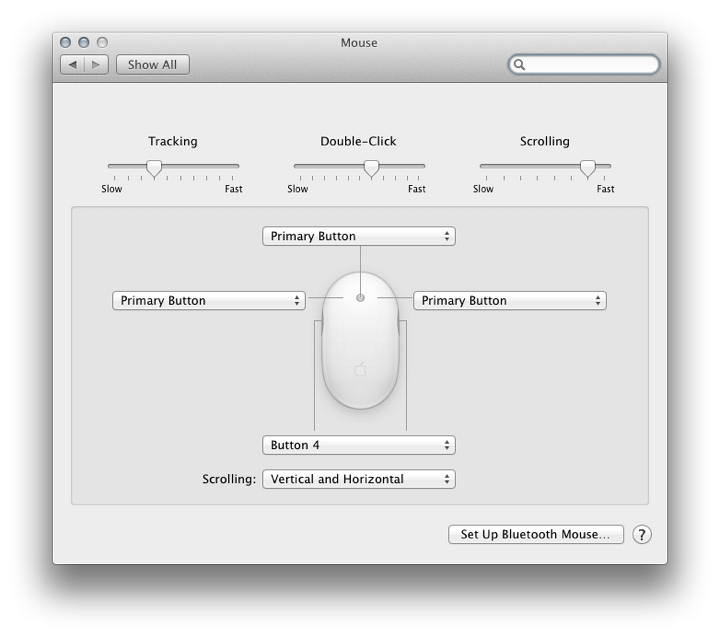
Mighty MouseThe Apple, "Mighty Mouse" (USB) was an attempt to provide more functions to a mouse. There are several tunable options giving a similar output to a 4-button mouse. Instead of a scroll-wheel it has a small scroll ball which was its Achilles Heel. A few may still be available.
The main area of the panel shows a diagram of the mouse and the tunable functions for each type of input. When first opened, all buttons show, "Primary Button". The normal mouse clicks for primary and secondary buttons may be allocated to left or right sides (angling the device activates the click). However, as well as these normal functions, these clicks can also be used for Mission Control, Exposé (App Windows, Desktop), Dashboard, Application Switcher, Spotlight, and Other. When "Other" is selected, a Finder window opens a Scripts folder thus making this highly tunable. The scrolling button -- the ball -- can be used for scrolling in several ways and a checkbox beneath the mouse diagram (near the bottom of the panel) allows selection from Vertical & Horizontal, 360°, Vertical Only, and Off. This scrolling ball may also be used as a button: options are the same as for the right/left buttons with the addition of Button 3 and Off.
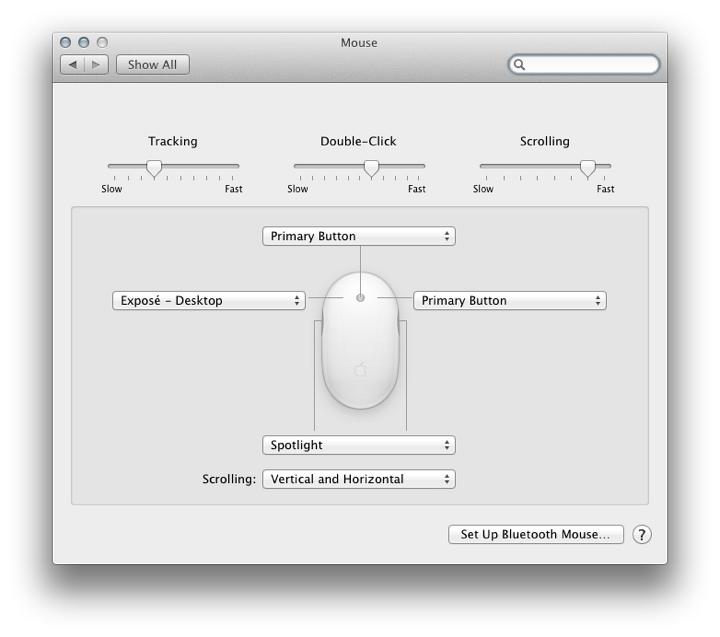
Magic MouseAlthough it may not suit all users, the Apple Magic Mouse combines the functions of a trackpad with the mouse and is supplied with new iMac computers. It connects to the computer via Bluetooth. Once the panel has recognised that there is an Apple Magic Mouse in the vicinity, a user must press, Continue. An icon on the computer screen shows when a connection is made (or lost).
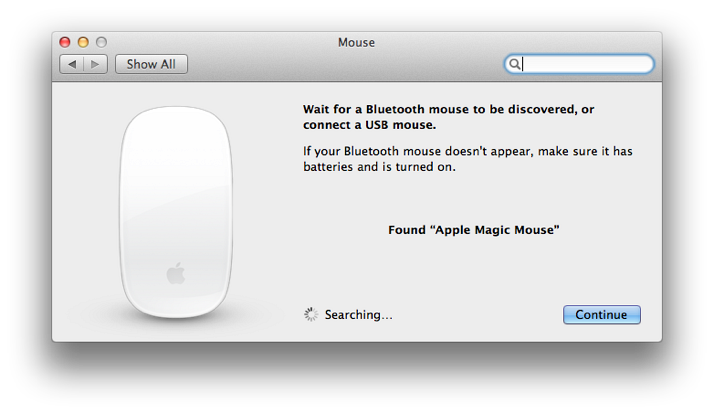
Point and Click has three checkboxes to the left of the panel for options:
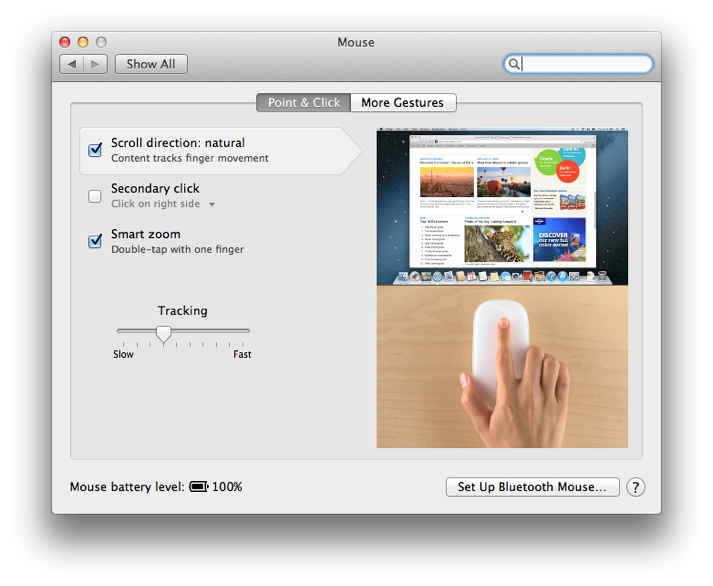
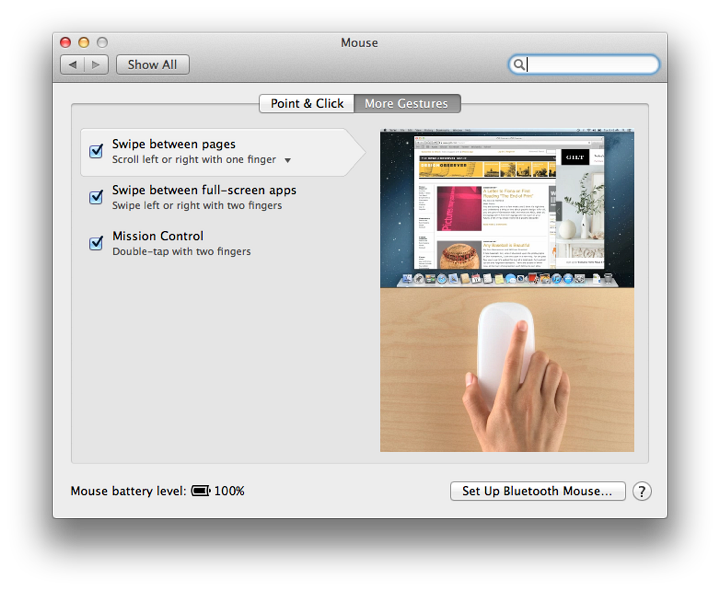
A button at bottom left, like on other panels, is available to set up a Bluetooth mouse. This brings up a small panel in which any nearby units are identified and may be selected. I had earlier found that if another mouse is connected by USB while the Magic Mouse is being used, the display does not change: the videos are still shown. The Mighty Mouse needs to be turned off, so that it will disconnect. A screen icon -- Connection Lost -- appears and the panel reverts to normal displays. Turning the Mighty Mouse back on displays the "Found . . ." text on the panel and pressing the Continue button completes the process.
NotesOS X System Preferences is able to handle input with most mouses (and I have checked the dictionary - the device plural is mouses). I have used a number of generic mouses with Macs as well as the Microsoft mouse (above). None needed additional drivers for my purposes.I would suggest that if users wish to use such a 3rd party mouse they try connecting it first before installing any additional driver software which itself may cause conflicts initially (or later when the operating system is updated).
See Also:
Graham K. Rogers teaches at the Faculty of Engineering, Mahidol University in Thailand where he is also Assistant Dean. He wrote in the Bangkok Post, Database supplement on IT subjects. For the last seven years of Database he wrote a column on Apple and Macs. |
|

For further information, e-mail to

|

|